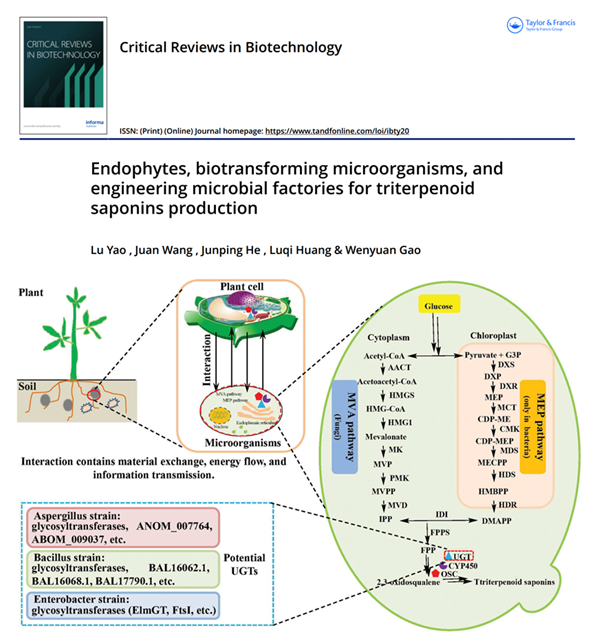Recently, Professor Gao Wenyuan’s research group from the School of Pharmaceutical Science and Technology (SPST) published an online articleEndophytes, Biotransforming Microorganisms, and Engineering Microbial Factories for Production of Triterpenoid Saponinsin the well-known biotechnology journalCritical reviews in biotechnology. This thesis systematically discussed the potential mechanism and high-yield strategies of triterpene saponins produced by microorganisms with inherent production capacity, biotransformation and engineered microorganisms, and pointed out the development direction for future research on synthetic biology of medicinal plants.
Triterpenoid saponins are secondary metabolites with diverse structures, and are the main active components of many medicinal plants with a wide range of pharmacological effects. The traditional production of triterpene saponins by directly extracting them from cultivated plants cannot meet the rapidly growing demands. Microorganisms that has the ability to produce triterpene saponins (especially Agrobacterium strain PDA-2) and biotransformation capabilities (Arelidia, Aspergillus, Bacillus, etc.) and engineered microorganisms are of great significance to the production of triterpene saponins.
However, microbial production of triterpene saponins still faces severe challenges, like the unclear biosynthesis mechanism of triterpene saponins inherent in natural microorganisms, the low inherent production and biotransformation efficiency, not fully discovered gene functions, and restricted types and output of triterpene saponins in engineered microorganisms.

With the development of synthetic biology, metabolic engineering and protein engineering, the introduction of new effective genes from microorganisms or plants, directed protein evolution and optimization of fermentation conditions will promote the productivity of triterpene saponins and the diversity of triterpene saponins in microorganisms. .
Dr. Lu Yao from SPST is the first author of the paper. Professor Wenyuan Gao and Associate Professor Juan Wang from SPST and Professor Huang Luqi from the China Academy of Chinese Medical Sciences are the co-corresponding authors. The paper was also assisted by associate professor Pecoraro Lorenzo of SPST.
By the School of Pharmaceutical Science and Technology
Editor: Eva Yin